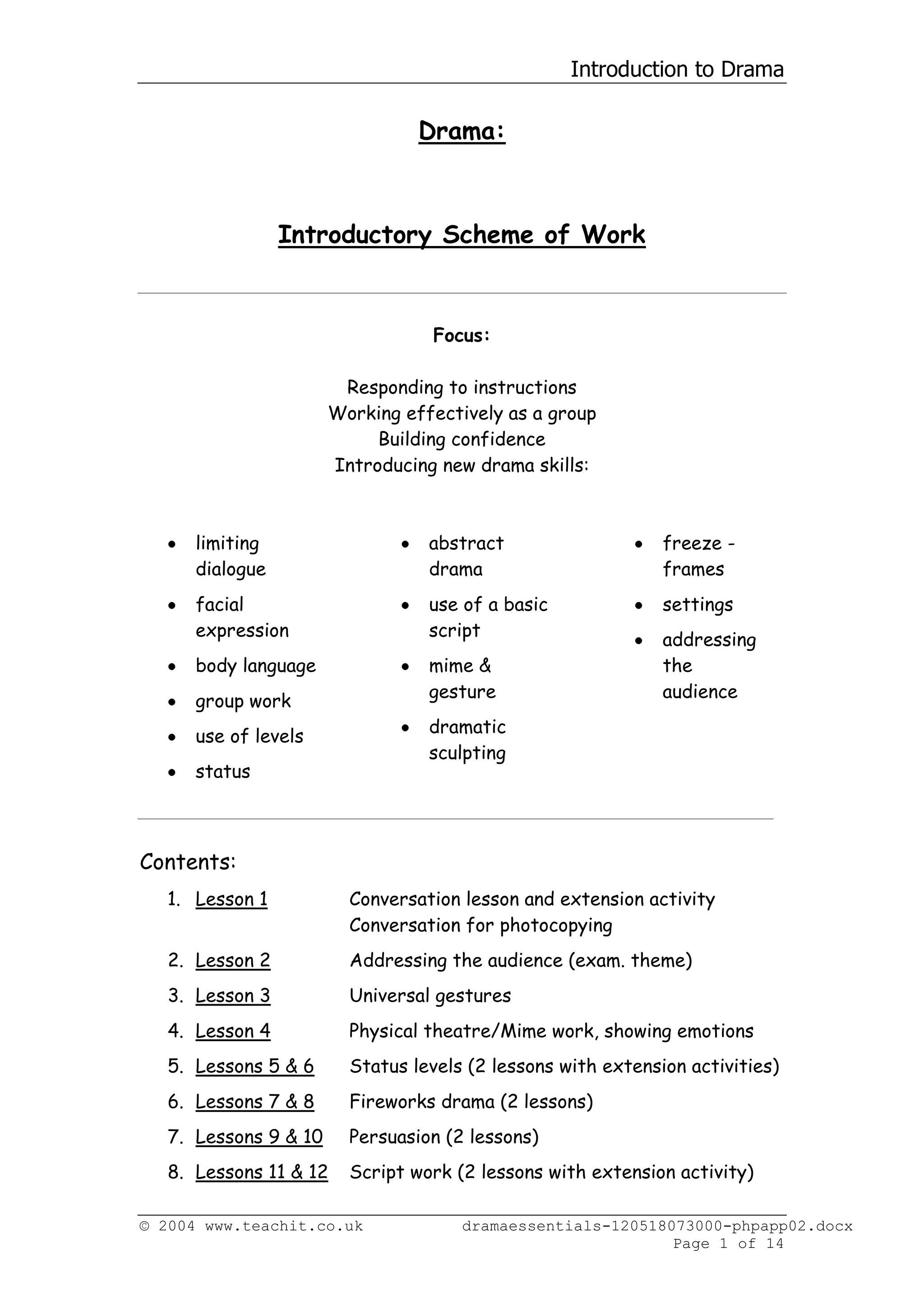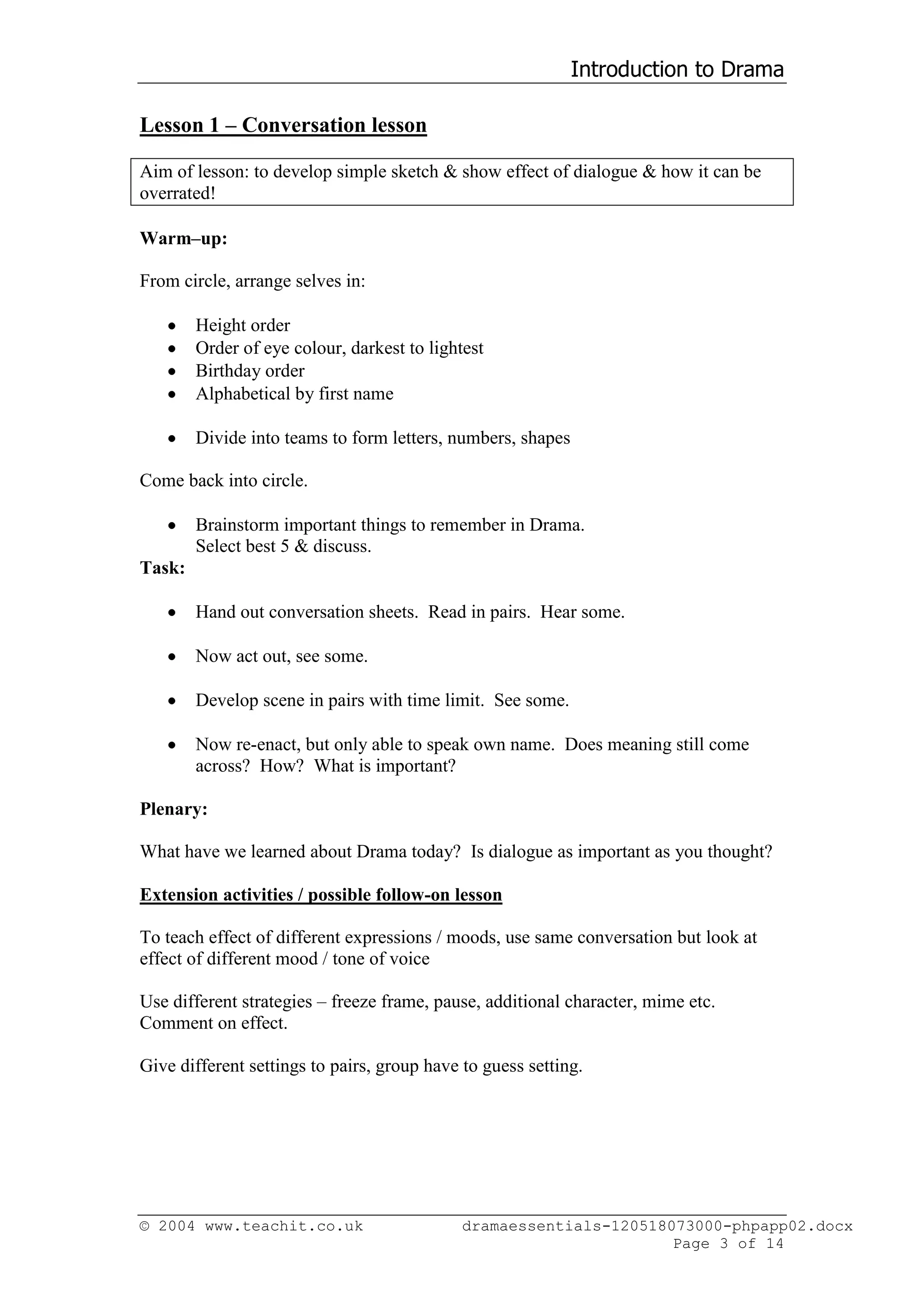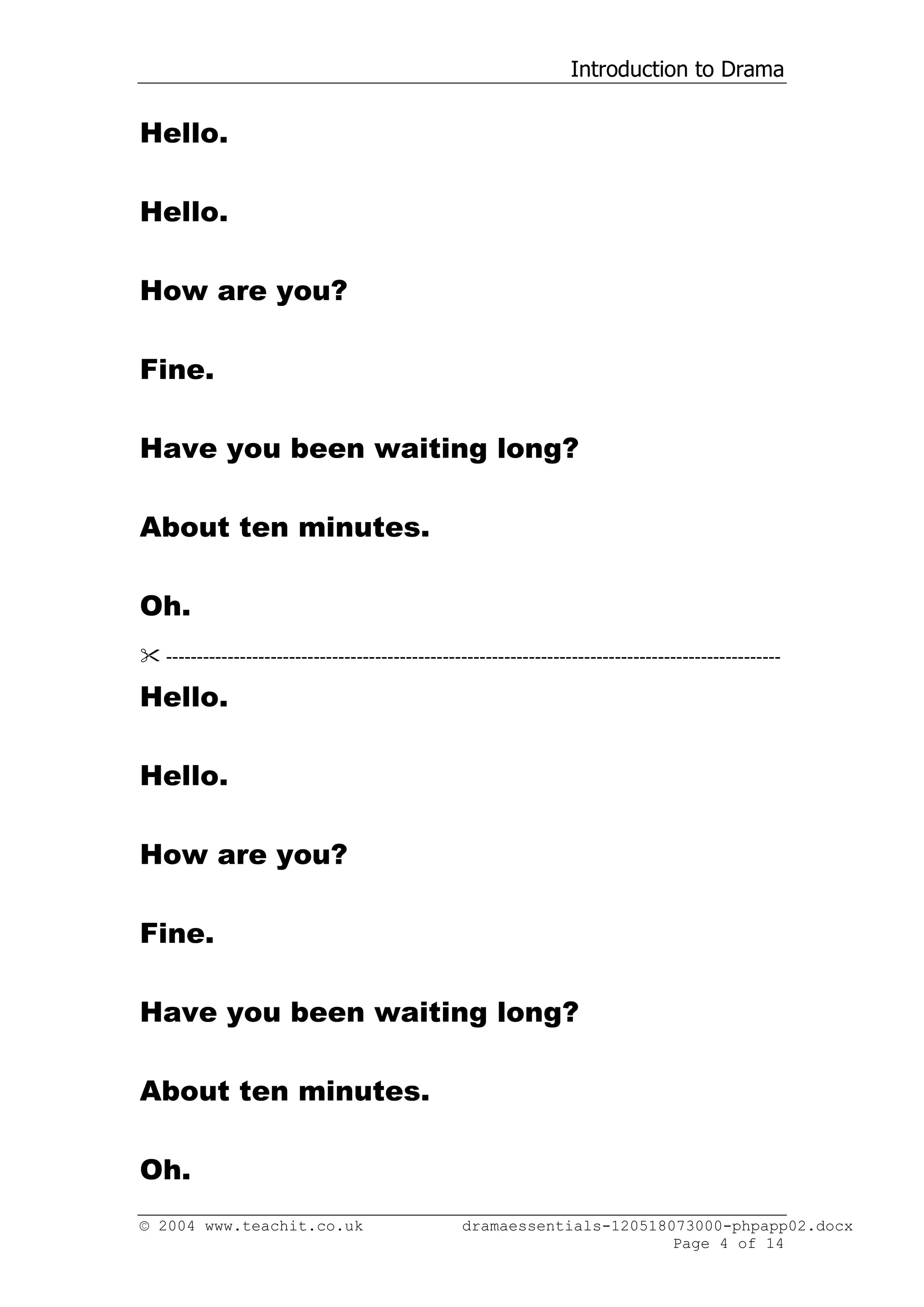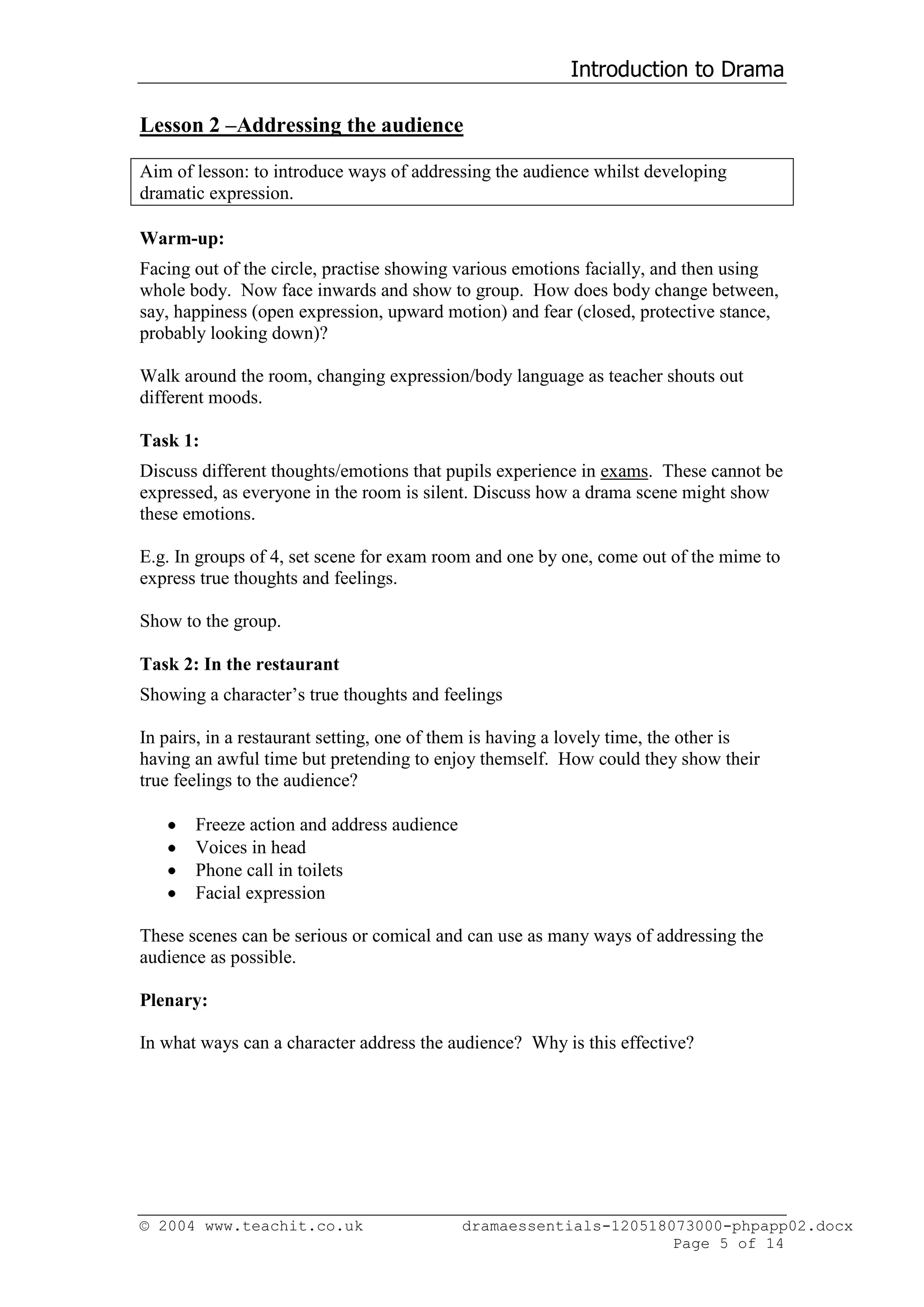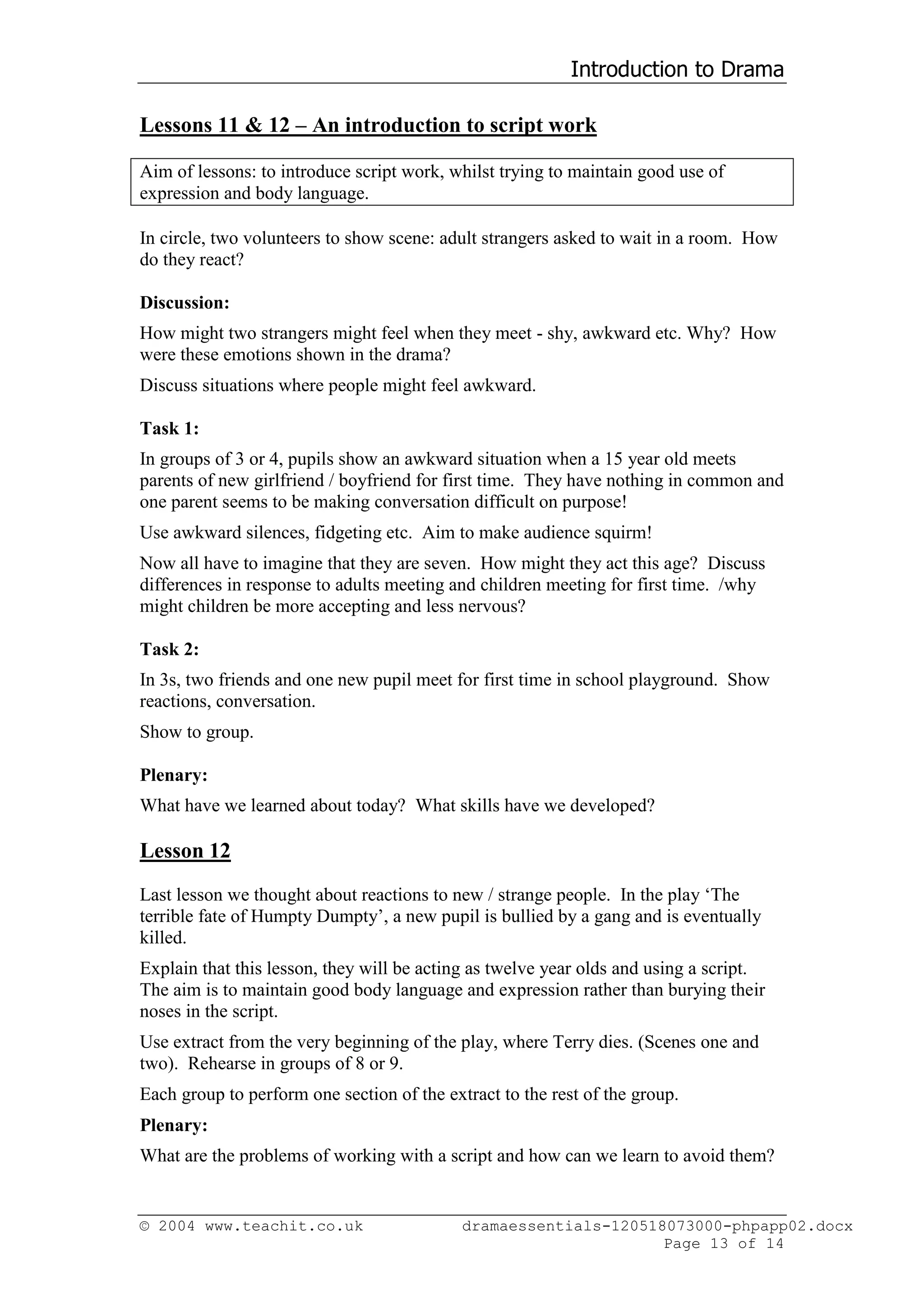This document provides an introduction and lesson plans for teaching drama. It focuses on developing confidence and drama skills like dialogue, facial expressions, body language, group work, mime, and gesture. The 12 lesson plans cover topics such as conversations, addressing the audience, universal gestures, physical theatre, status levels, script work, and more. Each lesson includes warm-up activities, tasks to work on skills, and ways to provide feedback and extension activities. The goal is to help students learn how to effectively communicate meaning and tell stories through their body language and expression without relying solely on words.
